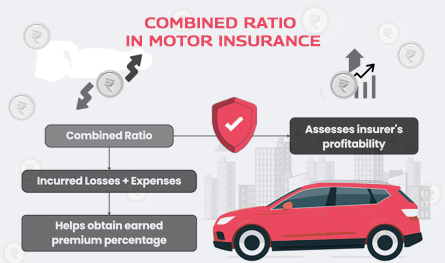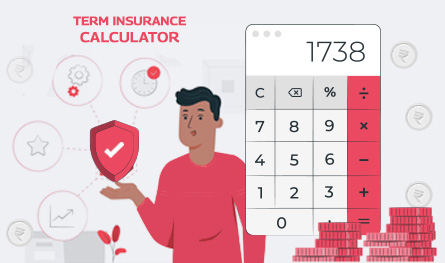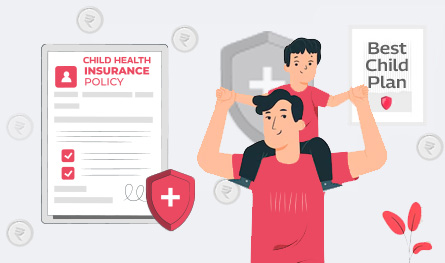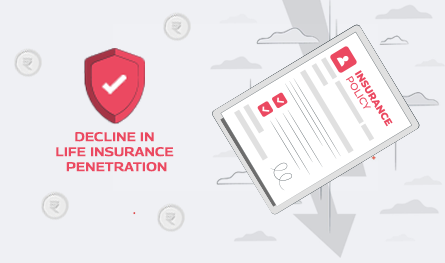What is Combined Ratio in Motor Insurance?

Let’s be honest—reading about insurance isn’t exactly your idea of a Saturday night thrill. But if you’ve ever opened your motor insurance renewal notice and thought, “Why does my car insurance premium rise again?”—you’re about to uncover one of the industry's best-kept secrets: the combined ratio.
No, it’s not a new insurance jargon that you need the dictionary to understand. It’s the financial pulse check your insurer uses to see if they’re actually making money, or just burning through it. And spoiler alert: if they’re not doing great, your four wheeler insurance premium is where they might make up the difference.
Stick around. Understanding this one metric might not make you the life of the party, but it could save you a few thousand bucks. And hey, that’s something to smile about - especially at renewal time.

What is a Combined Ratio?
The combined ratio is a financial health indicator used by motor insurance providers to assess how well they are doing in terms of underwriting and operations. Think of it as a report card that uses a set formula:
Combined Ratio = (Incurred Claim Losses + Other Expenses) / Earned Premiums x 100
If the combined ratio is under 100%, the company is profitable from its core insurance operations. Over 100%? They are spending more than they earn on claims and costs.
Let’s make this simple with two hypothetical cases:
Insurance Company A:
- Claims Paid: Rs. 60 crores
- Operating Expenses: Rs. 25 crores
- Earned Premiums: Rs. 100 crores
- Combined Ratio = (60 + 25) / 100 = 85%
Insurance Company B:
- Claims Paid: Rs. 65 crores
- Operating Expenses: Rs. 35 crores
- Earned Premiums: Rs. 100 crores
- Combined Ratio = (65 + 35) / 100 = 90%
Insurance Company C:
- Claims Paid: Rs. 70 crores
- Operating Expenses: Rs. 40 crores
- Earned Premiums: Rs. 110 crores
- Combined Ratio = (75 + 25) / 100 = 110%
Insurance Company A and Insurance Company B are making decent profits. Insurance Company C, on the other hand, is operating at a loss. Guess whose premiums are more likely to rise?
What Does the Combined Ratio Tell You?
If you think the combined ratio only matters to insurance analysts, think again. This number has direct implications for you, the policyholder. A low combined ratio means the company is running a tight ship - efficient, profitable, and less likely to surprise you with a sudden premium hike. But if this number starts creeping above 100%, it’s a major red flag for you. This is why:
- Rising Premiums: A higher ratio could mean the company is bleeding cash. To recover, they may raise your four wheel insurance premiums.
- Tighter Claims Policies: When the company is not making decent profits, it may tighten its claim approval or delay processing. This may cause you unnecessary trauma in emergency cases.
- Financial Stability: You want your insurance company to be around when you need it. A consistently high combined ratio could suggest deeper operational or risk-pricing issues.
To put this in layman’s terms, a healthy combined ratio gives you peace of mind. It signals that the insurance company can handle your claims smoothly without compromising on service quality.
The Difference Between the Combined Ratio and the Loss Ratio
At a glance, a company’s combined ratio and loss ratio may seem interchangeable, but they tell two different stories. Understanding the difference helps you make smarter choices while buying or renewing your motor insurance.
- Loss Ratio:
This number is all about claims. This tells you what percentage of the overall premium income your insurer is using to pay for damages, repairs, and other covered losses. So, for example, if the company’s loss ratio is 60%, the company is paying out Rs. 60 in claims for every Rs. 100 it is earning. - Combined Ratio:
This number goes a step further by adding operational costs to the picture. It includes everything from employee salaries to technology infrastructure. So, if the company has a 60% loss ratio and another 40% in expenses, the combined ratio becomes 100%. Now they are just breaking even. The company is making just enough profit to cover the expenses incurred.
Now, why does this matter to you? Because an insurance company with a low loss ratio but high combined ratio might still raise your four wheeler insurance premium, not because of risky drivers and expensive claims, but due to internal inefficiencies. A bloated expense line can inflate your premium costs even when claims are under control.
Being aware of both metrics means you can evaluate not just how an insurer handles risks, but how well they manage their business overall.

Author Bio
Paybima Team
Paybima is an Indian insurance aggregator on a mission to make insurance simple for people. Paybima is the Digital arm of the already established and trusted Mahindra Insurance Brokers Ltd., a reputed name in the insurance broking industry with 17 years of experience. Paybima promises you the easy-to-access online platform to buy insurance policies, and also extend their unrelented assistance with all your policy related queries and services.
Other Motor Insurance Products
Latest Post

Let’s be honest – life insurance planning isn’t exactly someone’s weekend hobby. It is the financial equivalent of flossing: we understand its importance, but we tend to put it off. But somewhere between balancing work and life, you might realise you need to have a solid plan in place – just in case.


Getting older is a mixed bag. On one hand, you have experience, wisdom, and the ability to spot and avoid a telemarketing scam from a mile away. On the other hand, your back makes creaking noises when you get out of bed.


As any parent will tell you, kids come with two things: endless energy and absolutely no sense of self-preservation. From scaling chairs and tables like mountaineers to catching germs within a five-mile radius, kids really know how to keep everyone on their toes. Now, it is understandable you are worried. As much as we would love to wrap our small ones in cotton wool and keep them safe forever, real life has other plans.


When was the last time you thought about getting a life insurance policy? If your answer is “I will get to it someday”, you are not alone. Despite India growing as one of the fastest expanding economies, life insurance penetration across the nation has remained surprisingly low. Life insurance penetration fell slightly to 2.8% in FY24, down from 3% in the previous year.

Let’s be honest, your health does not come with a warning sign. One moment you are enjoying your breakfast, and maybe in the next, you're staring at a hospital bill that looks like a phone number. This is why having solid medical insurance is not a luxury anymore. It is your financial shield, your plan B, and your peace of mind, all rolled into one.




